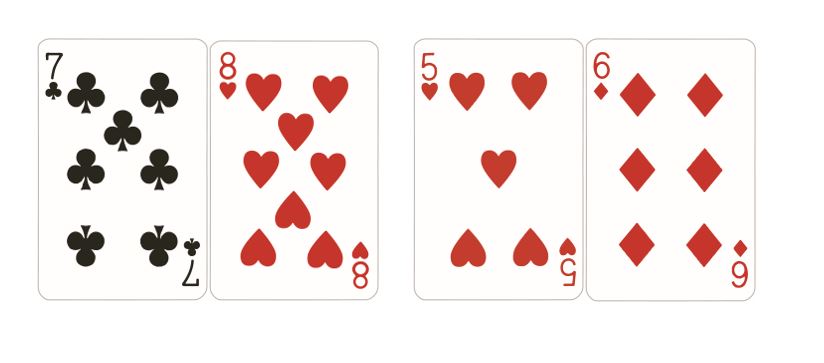As you develop and hone your poker skills, you’ll probably find yourself playing more types of hands. This is because you are stronger technically and can therefore make profitable decisions with less than premium hands. But how far does that extend? Is it right to play offsuit connectors like nine-ten or seven-eight? I will attempt to answer that question in this article.
Playing offsuit connectors preflop
Offsuit connectors are not a hand you’re going to play from early position in any circumstance. Even at a soft table you won’t be opening this wide from the early seats so I’m going to focus on situations where it’s a closer decision.
Unopened & late position
Whilst offsuit connectors are not an especially strong hand, they are certainly worth opening if it folds to you in the cut-off or the button. However, the lower connectors should be folded from the cut-off (e.g. 6 high and below). They are just too low and unlikely to be making even second pair on most flop textures. If you’re an experienced player, all the connectors should be profitable from the button and all 6 high or better can be played from the cut-off. This is on the condition that the stacks are sufficiently deep enough e.g. you’re not playing 10 BBs and below in a SNG.
Defending the blinds
All offsuit connectors should be folded from the small blind when you’re facing a raise. This is the case even if it’s the button who is raising. They are simply too weak to play out of position against a pre-flop aggressor. You’ll be spewing chips and hurt your bottom-line.
From the big blind, you will have scenarios where calling a small raise is justified. This is because you’re laid better odds and often closing the action pre-flop. For instance, someone min raising from the button is giving you too good a price to turn down. Therefore, you probably need to defend most, if not all connectors.
Against the slightly larger raises, you’ll be folding against the earlier position opens but defending against late position if the connectors are higher. For example, nine ten offsuit against 2.5x raise is a fold against the under the gun open but a defend against the button most of the time.
Lastly, if you are in the big blind and in a blinds battle against the small blind, I’d recommend defending almost all the offsuit connectors. The value of position justifies defending wider as you’ll have loads of different ways to win the pot post-flop.

How to play offsuit connectors postflop
It’s one thing identifying what scenarios you can play these hands pre-flop but how about after the flop? It’s vital to understand how to play offsuit connectors profitably after the flop too. That’s why I’m sharing some tips on the most common situations you’ll find yourself in with hands like six-seven and eight-nine.
Open-ended straight draws
With an open-ended straight draw you’ll at least be calling on the flop facing a bet but you’ll definitely have to mix in some post-flop raises based on opponents tendencies. Against a constant c-bettor, a hand like eight nine on six-seven-three is certainly worth a flop-raise some of the time. You have two overcards and can expect your opponent to fold a high amount too.
Conversely, against a TAG, on a board of Ace-Ten-Nine, you’re seven eight is shrivelling up and doesn’t do great when raising the flop.
Inside straight draws
With an inside straight draw, you should lean toward calling flop bets with a smaller percentage of raising. By flat calling you have the opportunity to hit your hand cheaply (hopefully) or taking the pot away later. Raising some of the time is wise as it balances your range and if you get re-raised, you are only denying yourself the opportunity to hit a 4 outer (approximately 8%).
Pairs
The tricky thing with flopping pairs with connectors is your kicker is lousy. A slower and more passive line is usually going to be the order of the day. Rarely will raising the flop or putting in larger bets yield profitable results with offsuit connectors as you either have 2nd pair or top pair with weak kicker. Additionally, you can’t easily rule out opponents having overpairs when the board is low.
Summary
In short, offsuit connectors can be a tricky hand to play. They should be played with caution and therefore its best to avoid playing them unless you have significant poker experience. Other than a few instances. If you’re a winning player and skilled post-flop, offsuit connectors should be in your raising range from late position and your big blind defending range.
If you’re unsure about offsuit connectors and would like me to review how you play them, why not book in a hand history review session? The first session is 50% off ($57.50).



